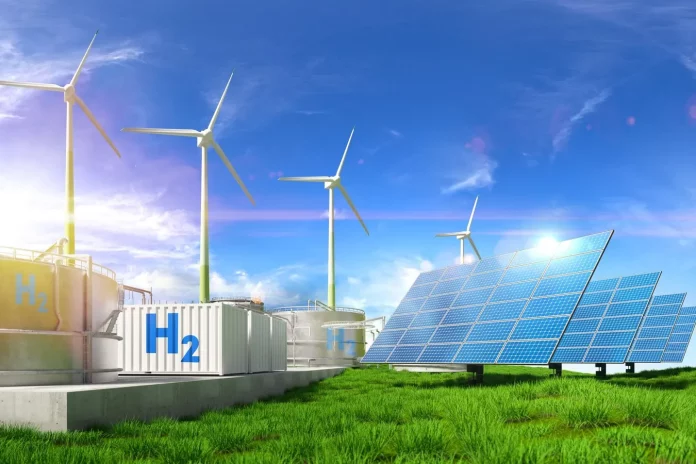Decarbonization is currently the clarion call within the global community. International bodies, national governments, corporations and individuals are striving to find innovative ways to reduce their carbon footprints. This has become imperative due to the devastating impact of the use of fossil fuels. Apart from the strong campaign for the world to transition to clean energy sources such as solar, hydro and wind, one significant clean innovation the world has not paid enough attention to is green hydrogen.
What is green hydrogen?
Water is an abundant resource on earth. Scientifically, the composition of water is hydrogen and oxygen atoms. In simple terms, a water molecule has 2 hydrogen (H) atoms and 1 oxygen (O) atom. This explains why water is referred to as H2O. Given the energy potential of hydrogen, the element is mostly separated from water or produced by different processes. Green Hydrogen is obtained through the use of energy from renewable sources such as solar and wind to separate water molecules into hydrogen and oxygen through a process called ELECTROLYSIS. This is the most environmentally friendly means of producing hydrogen, hence the color code of green.
How is green hydrogen applied?
Green hydrogen has a wide range of uses in numerous sectors, making it a versatile and critical component in the clean energy transition. Key applications of green hydrogen include the following:
- Energy Storage: In a world where energy conservation is very key, storage of excess renewable energy is very important. Green hydrogen can be used to store excess energy generated during periods of low demand. At periods when demand rises, the stored energy can be converted back into electricity. This helps stabilize the grid and increase the penetration of renewable energy sources.
- Backup Power: Extreme weather events often disrupt the power grid, causing communities and essential facilities, such as hospitals, businesses, to experience power outages. But with the energy storage capacity of green hydrogens, hydrogen fuel cells can used as backup power during severe weather events such as hurricanes, floods, cyclones, etc.
- Transportation: Green Hydrogen can be used as an alternative to gasoline and diesel. It can be used to power fuel-cell electric vehicles (FCEVs). The advantage of these FCEV vehicles powered by green hydrogen is that they have longer ranges and shorter refueling times compared to battery-electric vehicles (BEVs). This makes them a more befitting alternative for long-haul transportation.
- Industry: Industries cannot be exonerated from the devastating impact of fossil fuels on the earth. Green hydrogen can be used as an alternative source of energy to power industries such as glassmaking, steelmaking, cement production, semiconductors production, etc. For instance, Cemex, one of the world’s leading producers of cement, currently uses green hydrogen as part of their energy mix.





